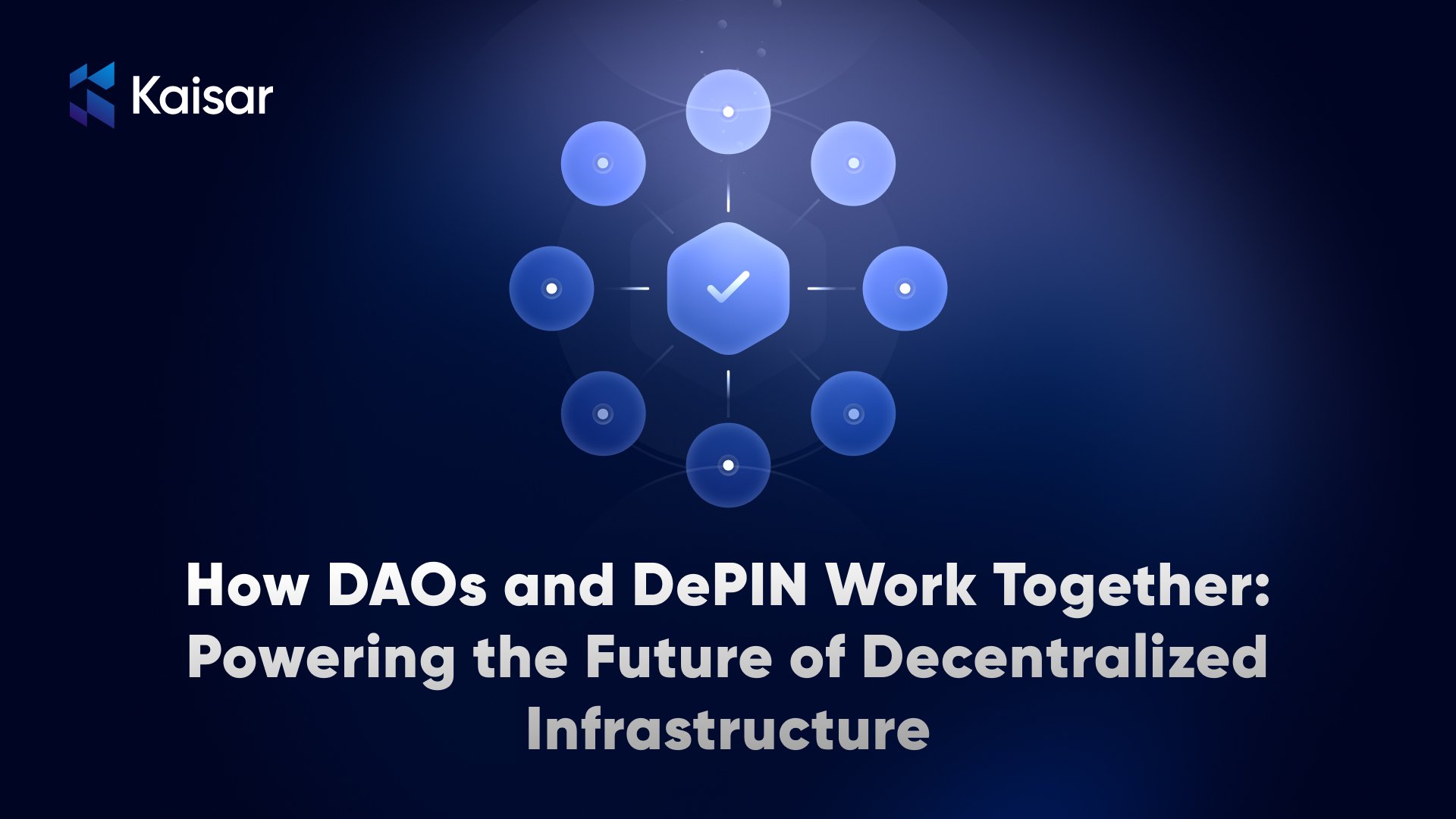As decentralized technologies are rapidly changing the digital environment, DAOs (Decentralized Autonomous Organizations), and DePIN (Decentralized Physical Infrastructure Networks) are now beginning to collaborate in a way that will be foundational to the next generation of web3 infrastructure technologies.
The uniting of DAOs and DePIN creates shared value through governance, incentivization, and trustless economies for physical infrastructure networks that have the potential to scale.
This article looks at how these DAOs and DePIN overlap, the benefits they forge together, and why they are becoming critical to decentralized computing.
What is a DAO?
Decentralized Autonomous Organization (DAO) means an organization is open for anyone to govern using blockchain and smart contracts (and the collective community that participates too). DAOs do not operate at the center of authority, hierarchically; they usually have a token-based voting structure to distribute democratic authority over decisions within the participants in their ecosystem.
Key Characteristics of DAOs
Transparency
All decisions (or votes) and monetary transactions through governance are recorded on- chain as transparency.
Automation
Smart contracts can enforce the rules of the organization on a decentralized network.
Incentivization
DAOs create incentive to all token holders that participate in the governance process and help all ensure that the mission and vision of their entire organization is collectively achieved.
What is DePIN?
DePIN (Decentralized Physical Infrastructure Networks) leverage unused real-world computing infrastructure(e.g., GPU, CPU, storage nodes ) and makes it part of a decentralized network.
Resource providers are rewarded with tokens or other crypto-economic incentives. The ethos of DePINs is to create open, permissionless, scalable, and censorship-resistant infrastructure.
How DAOs and DePIN work together
At a fundamental level, both DAOs and DePINs seek to disintermediate centralized control with distributed participation. DAOs support decentralized governance for infrastructure projects, especially important for DePINs, in which ongoing infrastructure decisions will require input from the community.
DePINs work on token incentives structuring contributions of physical resources in the community. while DAOs ensure token allocation and rewards happen transparently and fairly. If DePINs tap into governance led by a DAO it can potentially scale organization all around the world without a central authority.
Real World Example
Consider a decentralized GPU sharing network, like Kaisar Network which is a DePIN specialized for AI and computing workloads. Kaisar allows any individual to contribute their excess GPU capacity and open it up for training on an AI model.
Here’s how DAO supports and empowers a Kaisar DePIN:
An individual contributor could propose to add support for a new model of GPU, update stake requirements, or integrate with an AI framework that they prefer. The DAO
then votes to decide whether or not to accept the proposal.
The DAO determines how to distribute rewards to contributors and users in relation to usage metrics of their contributed computing node uptime, and condition.
When a major update is required, increased security mechanisms and performance tuning, the DAO will govern the update to any corresponding proposals to the stakeholders & contributors.
All activity including reward calculations, node reputation, and policy are verifiable on blockchain, which increases the level of trust in the DAO with its community and users.
Benefits of DAO-Governed DePINs
The DAOs that govern DePINs has various benefits with appropriate governance. The governance model could take many forms, depending on the size, maturity, and objectives of the DePIN.
DAOs allow DePINs to coordinate economic interactions across thousands of actors without centralized incentives. Proposals through DAOs can enable dynamic pricing based on market supply and demand conditions.
Token-based staking can guarantee that contributors have something at stake and would lose something during downtime or act fraudulently.
DAOs can vote on adopting third-party verification mechanisms or zero-knowledge proofs to ensure distribution of contributed resources is legitimate and obtainable.
Conclusion
There is a real need for decentralized and democratized compute. The combination of DAOs DePIN and AI makes it a very compelling option.
DePIN provides compute for AI workloads to make decisions and generate value whereas a DePIN governed by a transparent DAO governs contribution and consumption allowing better decision making and resource allocation.
Join Kaisar DePIN
Kaisar is bringing a decentralized compute future by combining the capabilities of DePIN. If you are a GPU provider, AI developer, or someone who simply loves blockchain technology, Kaisar allows you to contribute your unused GPUs and earn rewards.Visit kaisar.io to get started.

